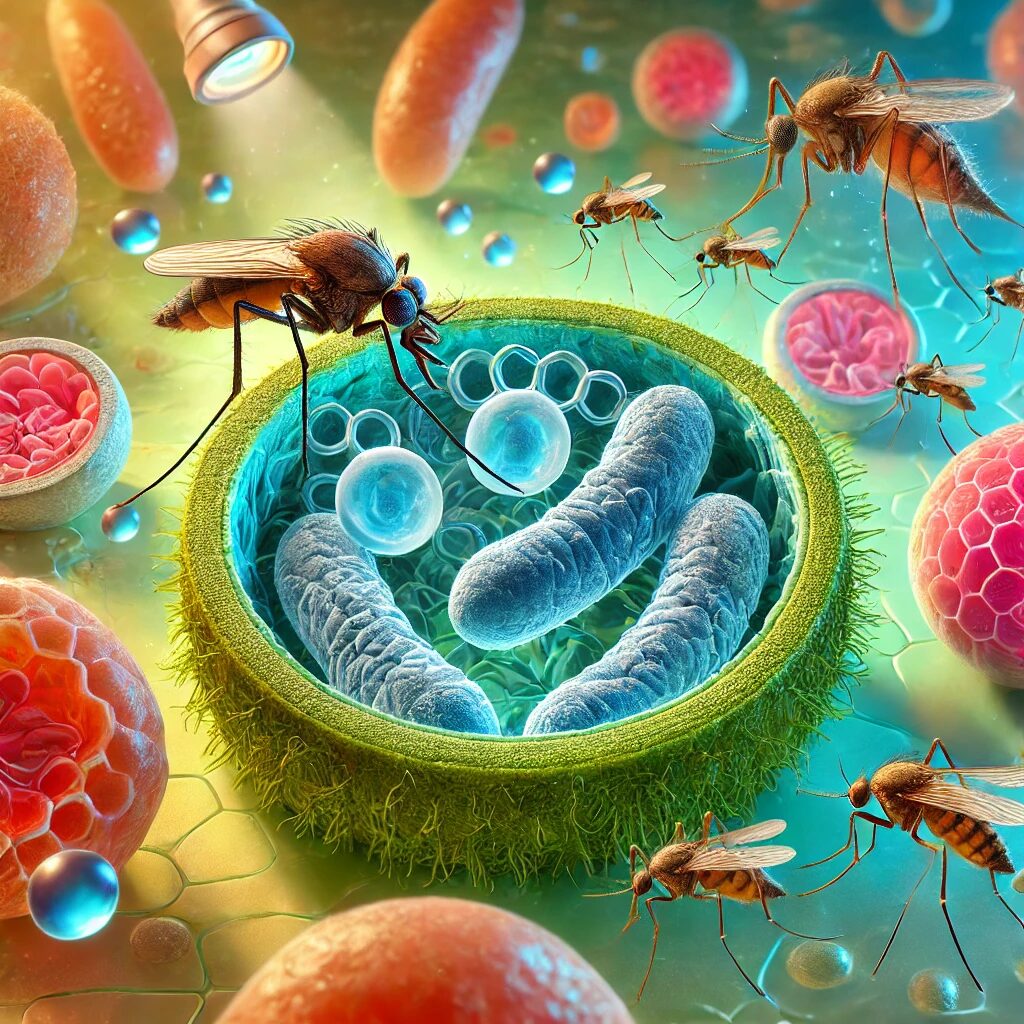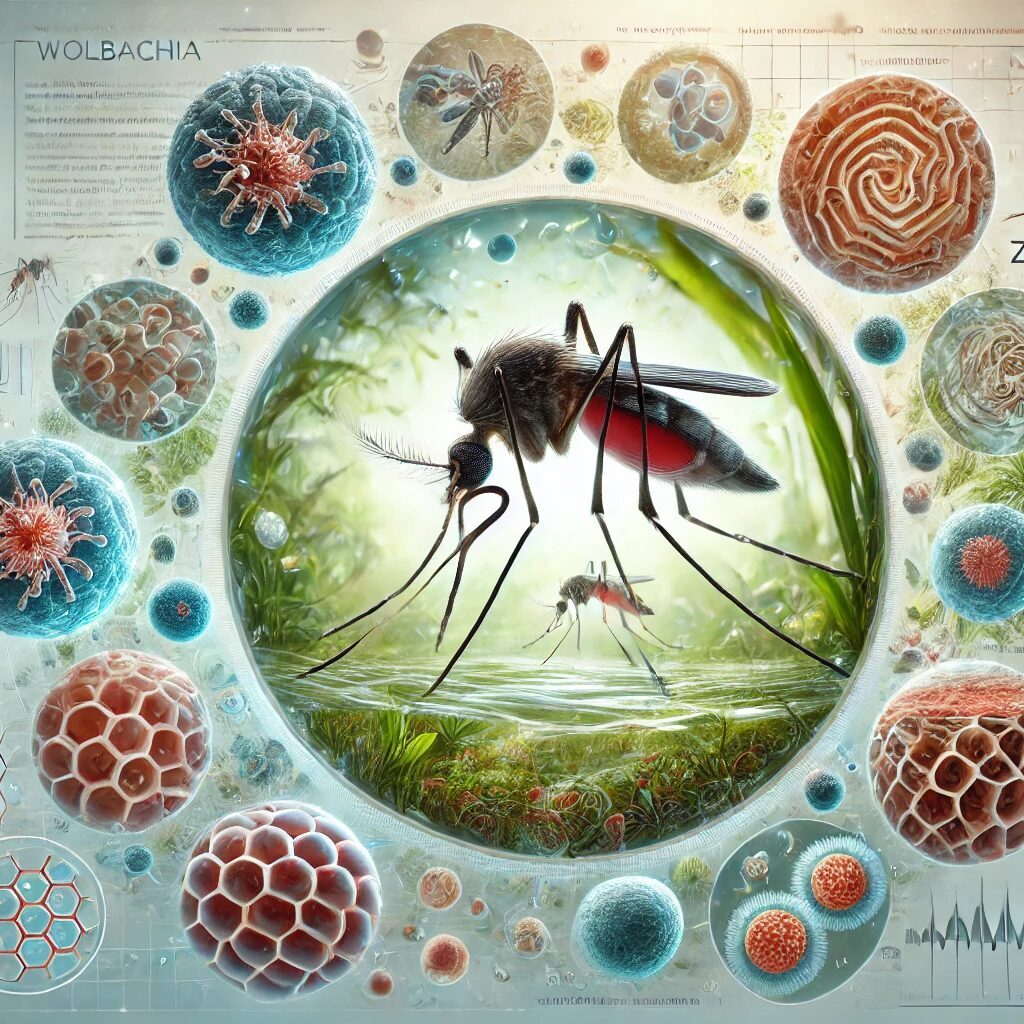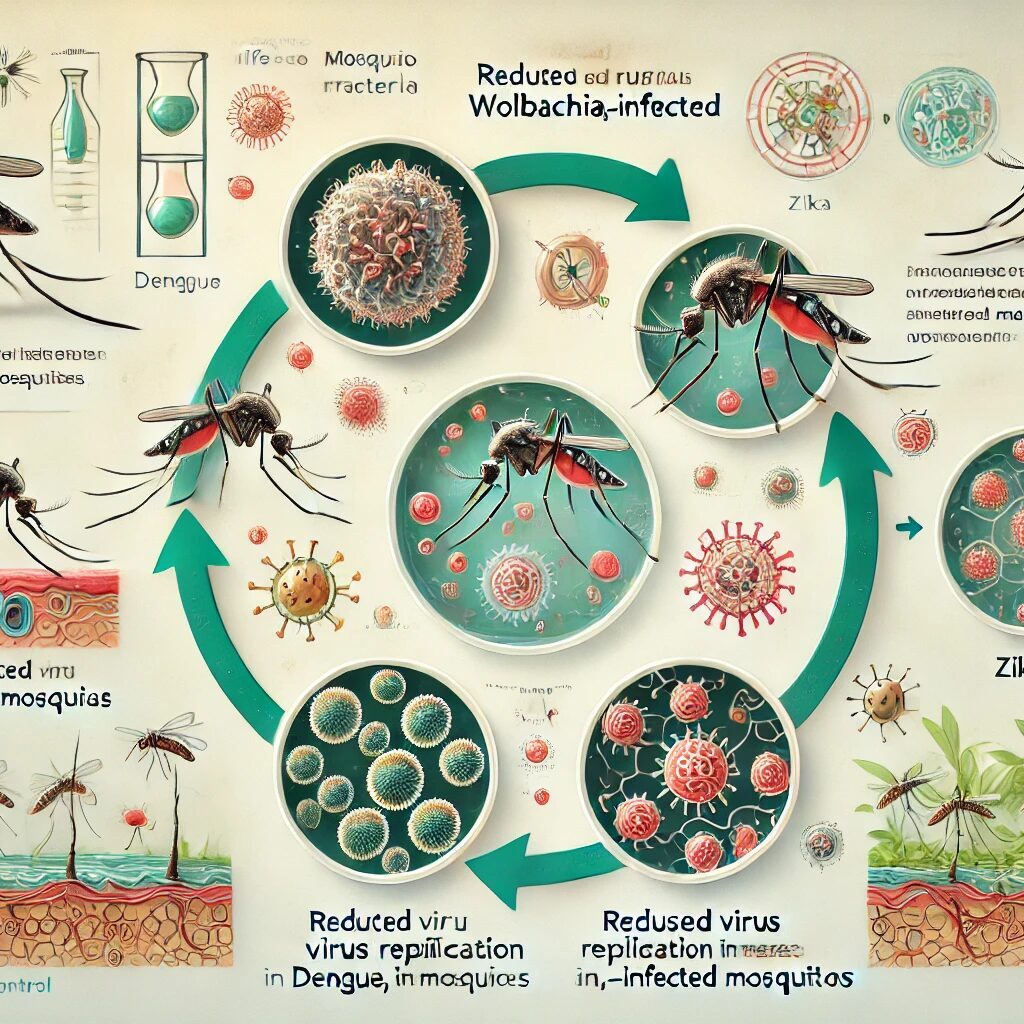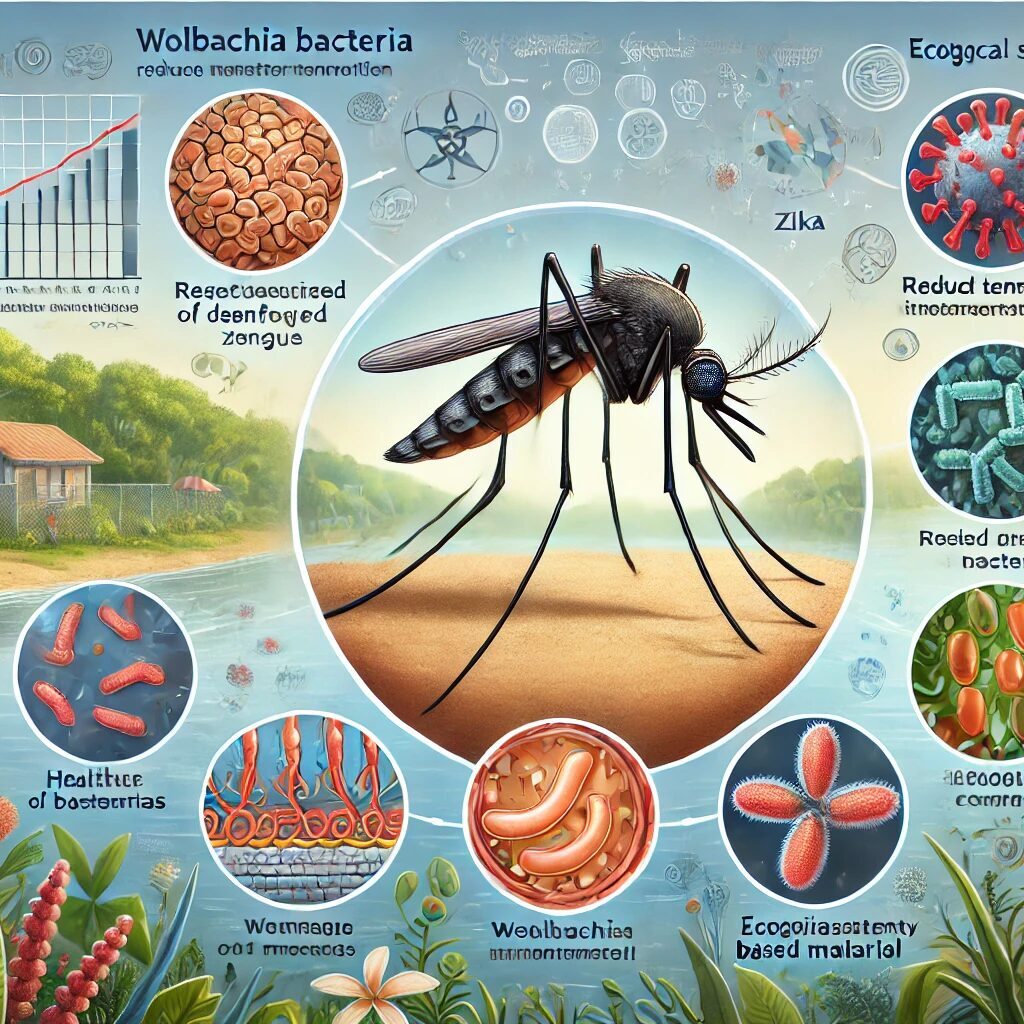
Reducing mosquito-borne diseases with precision, Wolbachia for Mosquito Control disrupts mosquito reproduction and disease transmission—all without chemical pesticides.
As global health faces the ongoing challenge of mosquito-borne diseases like dengue, Zika, and chikungunya, innovative solutions are increasingly necessary to protect vulnerable populations.
Traditional methods of mosquito control, which often rely on chemical pesticides, have environmental drawbacks and can lead to pesticide resistance. Enter Wolbachia, a naturally occurring bacterium, which offers a sustainable alternative that leverages biology to control mosquito populations and reduce disease spread.
This comprehensive approach, known as Wolbachia for Mosquito Control, is proving effective in regions around the world.
Wolbachia and Mosquito-Borne Diseases

Mosquito-borne diseases affect millions of people globally, particularly in tropical and subtropical regions. Diseases like dengue, Zika, and chikungunya are spread by Aedes aegypti, a mosquito species that has proven difficult to control using traditional methods.
The Wolbachia bacterium has emerged as a potential game-changer in this field. Found in over 60% of insect species, including flies, beetles, and wasps, Wolbachia is inherited maternally (from mother to offspring) and has unique effects on insect reproduction.
Scientists have created an innovative mosquito control strategy that reduces disease transmission without environmental harm by harnessing Wolbachia’s biological mechanisms.
How Wolbachia Works in Mosquito Control

Wolbachia for Mosquito Control relies on three primary mechanisms to reduce mosquito populations and hinder disease spread:
Cytoplasmic Incompatibility: When Wolbachia-infected male mosquitoes mate with uninfected females, the eggs fail to develop, effectively stopping reproduction in that pairing. This incompatibility helps reduce the mosquito population over time, as fewer offspring are born from each generation.
Pathogen Blocking: Wolbachia can prevent viruses like dengue and Zika from replicating within mosquitoes. This effect blocks transmission to humans, as infected mosquitoes carry much lower virus loads. The exact mechanism behind pathogen blocking is still being studied, but it likely involves immune responses triggered by Wolbachia in the mosquito.
Maternal Transmission: Unlike many control methods that require constant reapplication, Wolbachia spreads naturally within mosquito populations. When an infected female mosquito mates, all her offspring inherit Wolbachia, ensuring that the bacterium spreads across generations. By releasing Wolbachia-infected females, scientists can establish a self-sustaining population of infected mosquitoes, providing long-term control.
Benefits of Using Wolbachia for Mosquito Control

The Wolbachia for Mosquito Control approach offers numerous benefits over traditional methods:
Sustainability: Unlike chemical pesticides that require regular reapplication and degrade the environment, Wolbachia persists in mosquito populations through maternal transmission. Once established, Wolbachia can maintain its presence in mosquito populations with minimal further intervention, offering a more sustainable and long-term solution.
Reduced Disease Transmission: With pathogen-blocking effects, Wolbachia-infected mosquitoes are less likely to transmit diseases to humans. This reduction in viral load directly correlates to fewer cases of diseases like dengue and Zika in areas where Wolbachia programs have been implemented.
Environmentally Friendly: Wolbachia does not harm non-target species or ecosystems, making it a safer alternative to insecticides. It is specific to the Aedes mosquito and does not impact beneficial insects, birds, or mammals in the ecosystem.
Compatibility with Other Control Methods: The Wolbachia method can be integrated with other approaches, such as the Sterile Insect Technique (SIT) or genetic modifications, to create a comprehensive pest control program. By combining methods, mosquito populations and disease transmission can be reduced even more effectively.
Real-World Applications and Case Studies
Wolbachia for Mosquito Control has been successfully implemented in several regions with promising results:
Brazil: In areas plagued by dengue, Wolbachia-infected mosquitoes were released in collaboration with local governments, leading to significant reductions in disease cases. Brazil’s large-scale application of Wolbachia showcases its potential to reduce health burdens in densely populated regions.
Australia: Australia’s Wolbachia mosquito control program began with trials in Queensland, where the mosquito population carrying Wolbachia reached high levels over time. The country has since expanded the program to other regions, demonstrating that Wolbachia can spread effectively through wild mosquito populations and create lasting changes.
Southeast Asia: Countries like Vietnam and Indonesia have adopted Wolbachia programs, particularly in urban areas where high mosquito densities contribute to frequent outbreaks. Initial results have shown decreases in dengue incidence, offering hope that Wolbachia could play a critical role in controlling urban mosquito populations.
Challenges and Considerations in Implementing Wolbachia-Based Control
While Wolbachia for Mosquito Control has shown effectiveness, several challenges remain:
Genetic Resistance: As with any biological control method, there is the risk that mosquitoes could eventually develop resistance, diminishing Wolbachia’s effectiveness. Research is ongoing to monitor populations and adapt strategies if resistance arises.
Environmental Factors: Wolbachia’s effectiveness can vary depending on climate and mosquito behavior. For instance, areas with high temperatures may affect Wolbachia’s ability to establish in mosquito populations, necessitating adjustments to local release strategies.
Community Acceptance: The success of Wolbachia programs often relies on community cooperation and understanding. In some cases, residents may be hesitant about releasing modified mosquitoes, so outreach and education are essential to gaining public support.
Regulatory and Ethical Concerns: Implementing Wolbachia programs can require navigating regulatory and ethical hurdles, as public health authorities must balance the benefits of disease reduction with the potential ecological impact of altering mosquito populations.
Future Prospects of Wolbachia in Mosquito Control
The future of Wolbachia for Mosquito Control looks promising, with ongoing research exploring its applications in various mosquito species and other vectors:
Research on Other Mosquito Species: Scientists are investigating whether Wolbachia can be applied to other mosquito species, such as Anopheles, the primary malaria vector. If successful, this could expand Wolbachia’s reach to combat malaria in addition to dengue and Zika.
Integration with Genetic Techniques: There is potential to combine Wolbachia with genetic tools like CRISPR-Cas9 to amplify effects and address limitations. By integrating Wolbachia with gene drives or genetically modified mosquitoes, pest control programs can achieve greater precision and population management.
Global Expansion of Wolbachia Programs: With successful case studies in multiple countries, international health organizations and governments are likely to expand Wolbachia programs to new regions. This could transform public health approaches, particularly in underserved regions where mosquito-borne diseases are prevalent.
Conclusion
The use of Wolbachia for Mosquito Control is changing the landscape of vector control and public health. By blocking disease transmission, reducing mosquito populations, and minimizing environmental impact, Wolbachia offers a revolutionary approach to combatting mosquito-borne diseases sustainably.
As research and technology evolve, Wolbachia may become an even more powerful tool for controlling not only Aedes aegypti but also other disease-carrying species. With community support and continued research, Wolbachia has the potential to make a lasting impact on global health, reducing disease burden and advancing sustainable mosquito control.
